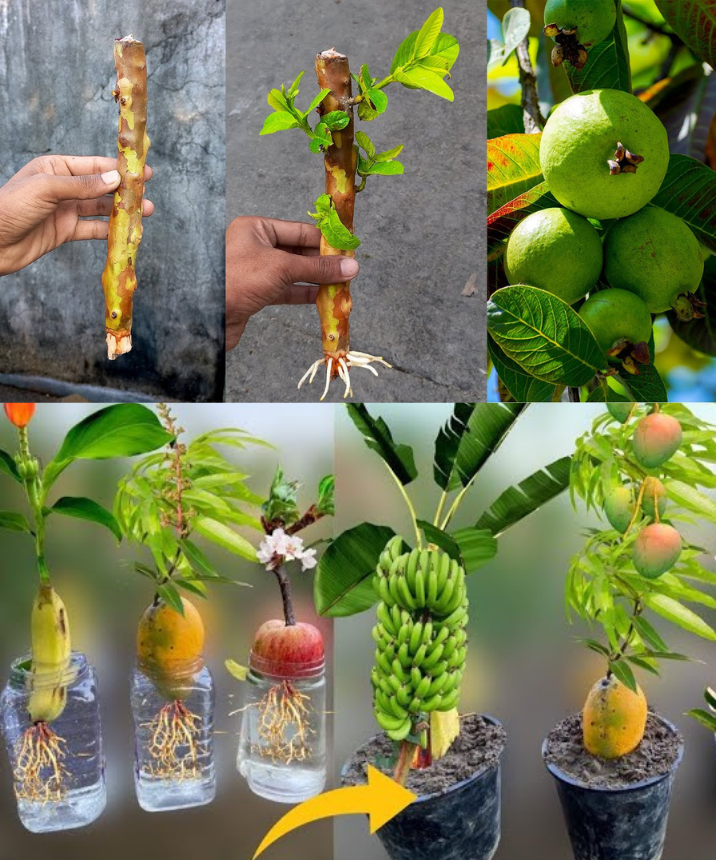In the world of gardening and horticulture, propagating plants from cuttings is a fascinating process that allows enthusiasts to replicate their favorite specimens with precision. Among the plethora of plants that can be propagated this way, guava, mango, and orange trees stand out as beloved choices for their delicious fruits and lush foliage. Delving into the history of how to cultivate these trees from cuttings reveals a journey of patience, technique, and a deep connection with the natural world.
Understanding the Basics:
Before delving into specific techniques for each tree, it’s essential to understand the fundamental principles of propagating plants from cuttings. This method involves taking a part of a healthy and mature plant (usually a stem or a branch) and encouraging its root development, eventually turning it into an independent plant. Timing, preparation, and care are crucial elements to ensure success.
Cultivating Guavas from Cuttings:
Guava trees (Psidium guajava) are known for their tropical flavor and resilience. Propagating guava from cuttings is relatively straightforward, making it an accessible option for gardeners. Begin by selecting a healthy branch with several leaf nodes. Cut the branch at a 45-degree angle just below a node, ensuring the cutting is around 6-8 inches long. Remove all leaves from the bottom half of the cutting to prevent excessive moisture loss. Dip the cut end into a rooting hormone to encourage root development and plant it in well-draining potting mix. Keep the soil consistently moist and provide warmth and indirect sunlight. With patience, roots should develop within a few weeks, signaling successful propagation.
Cultivating Mangoes from Cuttings:
Mango trees (Mangifera indica) are cherished for their juicy and flavorful fruits and lush foliage. While it’s common to grow mango trees from seeds, propagating them from cuttings offers a shortcut to fruit production. Select a healthy and semi-woody branch for your cutting, ideally 12-18 inches long. Remove any flowers or fruits from the branch to redirect energy towards root development. Make a clean cut just below a leaf node and remove any leaves from the bottom portion of the cutting. Apply rooting hormone to the cut end and plant in well-draining potting mix. Keep the soil consistently moist and provide warmth and indirect sunlight. With proper care, roots will begin to form within a few weeks, marking the beginning of your mango tree’s journey.
Cultivating Oranges from Cuttings:
Oranges (Citrus sinensis) are synonymous with freshness and flavor, making them a popular choice for home gardens. Propagating orange trees from cuttings offers a reliable method for preserving desirable traits. Select a healthy and semi-woody branch for your cutting, aiming for a length of 6-8 inches. Remove any flowers or fruits from the branch to promote root development. Make a clean cut just below a leaf node and remove any leaves from the bottom portion of the cutting. Apply rooting hormone to the cut end and plant in well-draining potting mix. Keep the soil consistently moist and provide warmth and indirect sunlight. Over time and with care, roots will begin to emerge, signaling successful propagation of your orange tree.
Conclusion:
Cultivating guava, mango, and orange trees from cuttings is a rewarding endeavor that allows gardeners to connect with nature on a deeper level. By understanding the fundamentals of propagation and following specific techniques tailored to each tree, enthusiasts can replicate their favorite varieties with precision. Whether you’re cultivating a tropical oasis or simply seeking to enjoy the fruits of your labor, the journey from cutting to flourishing tree is a testament to the beauty and resilience of the natural world.
